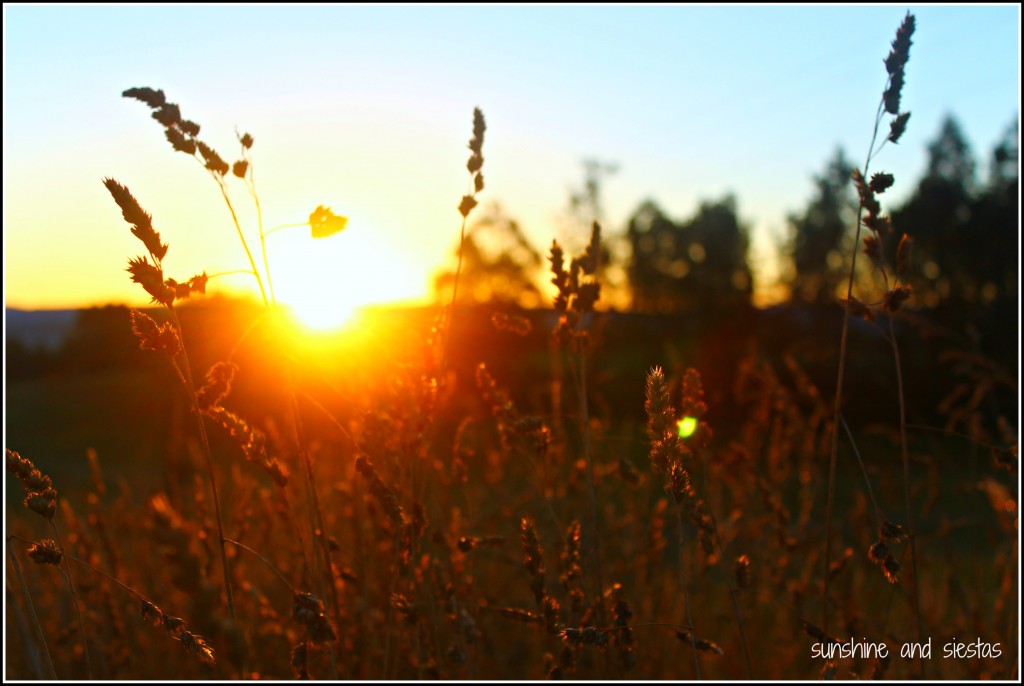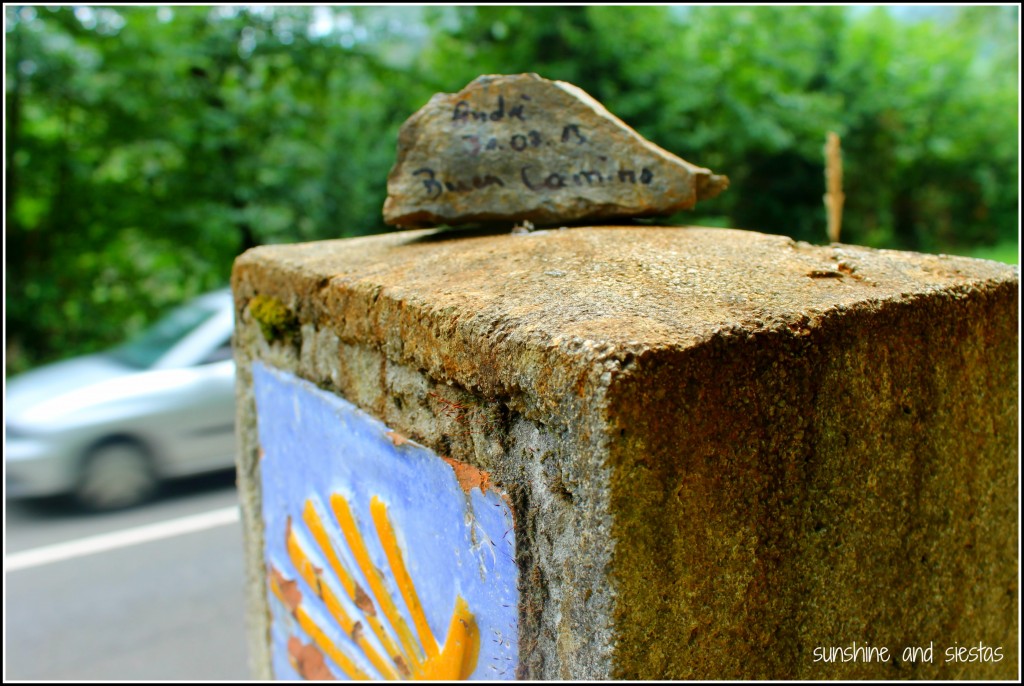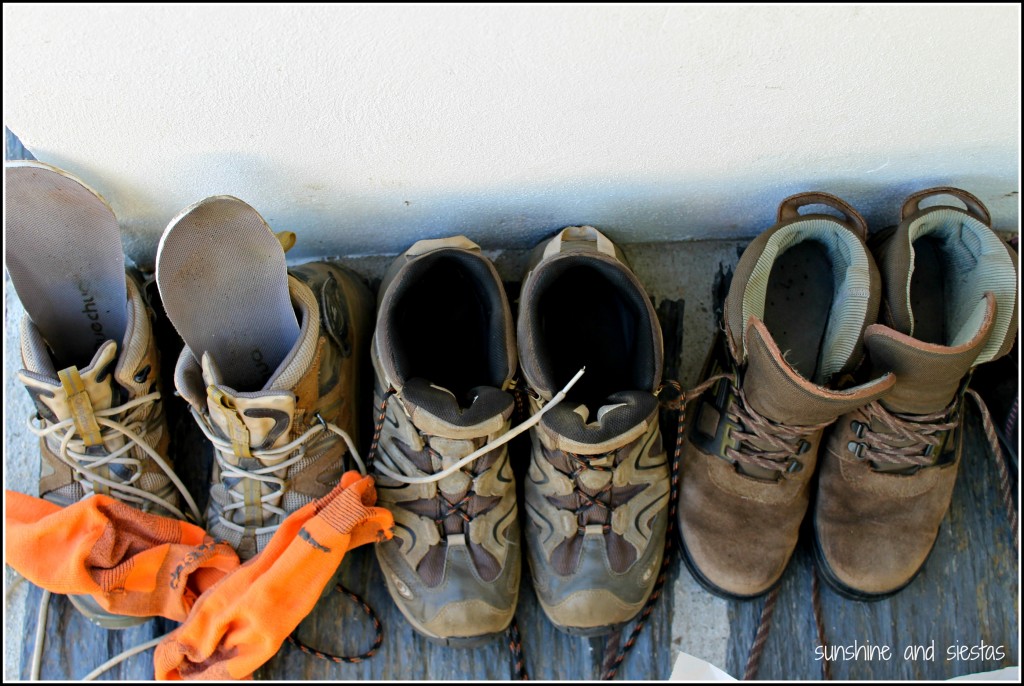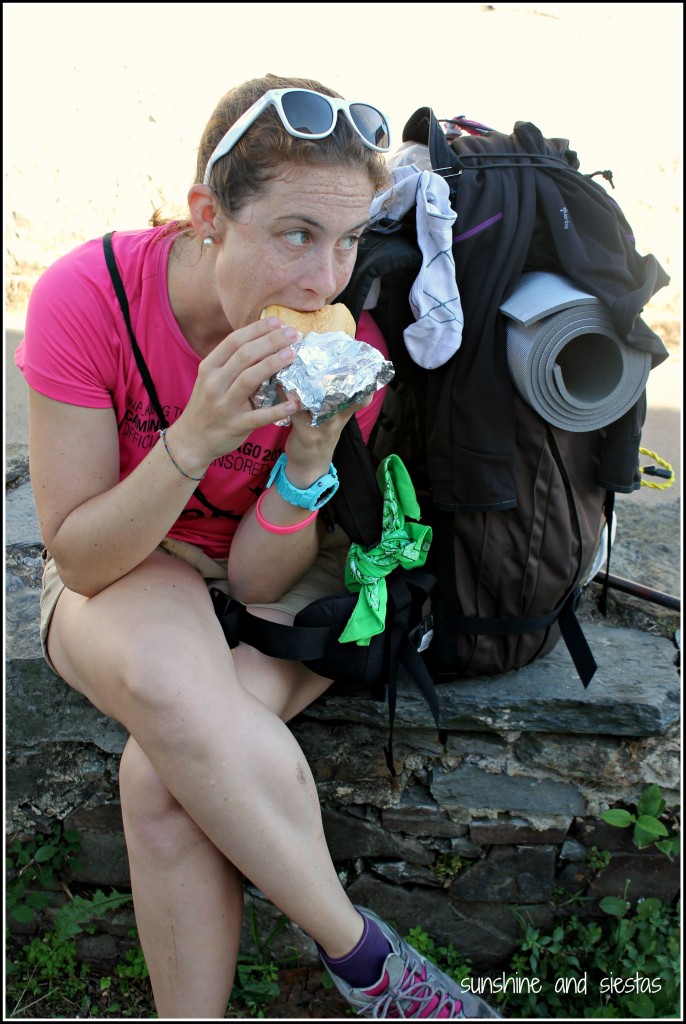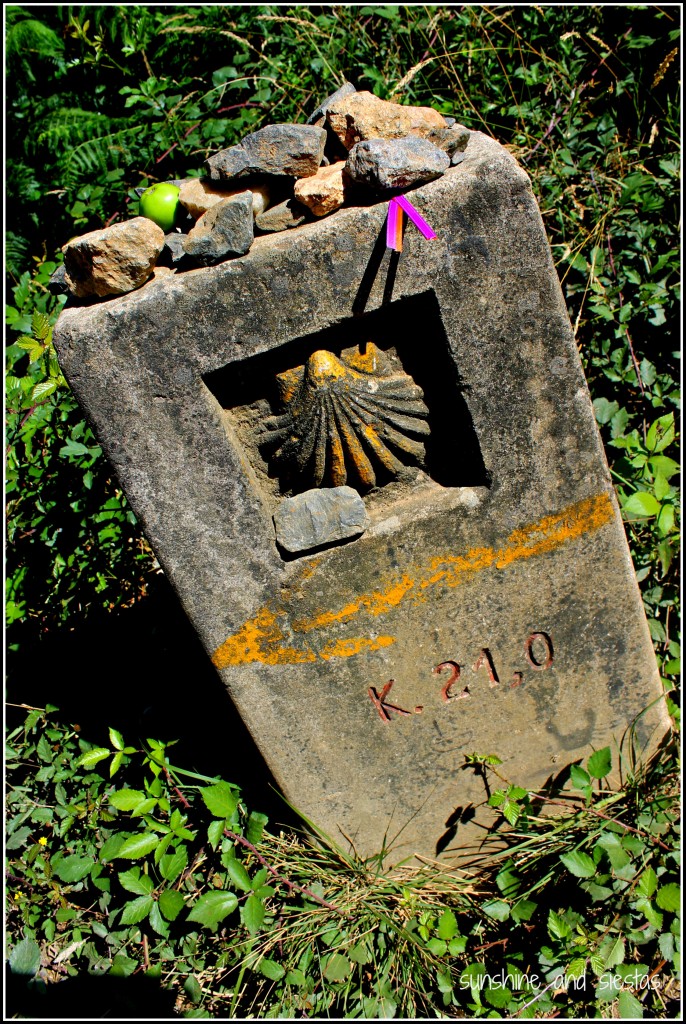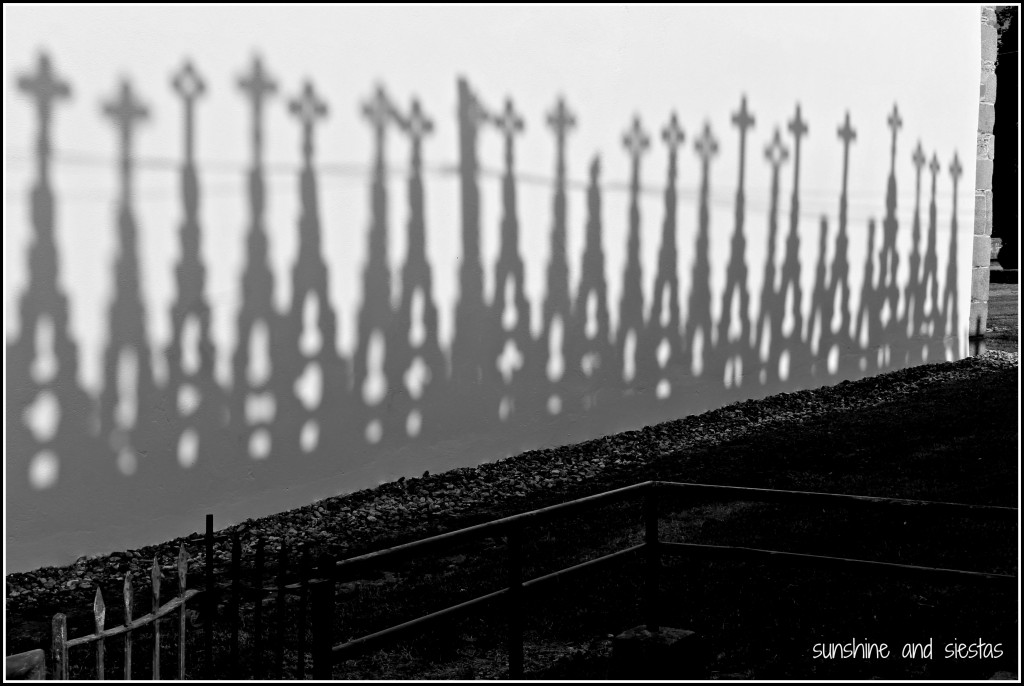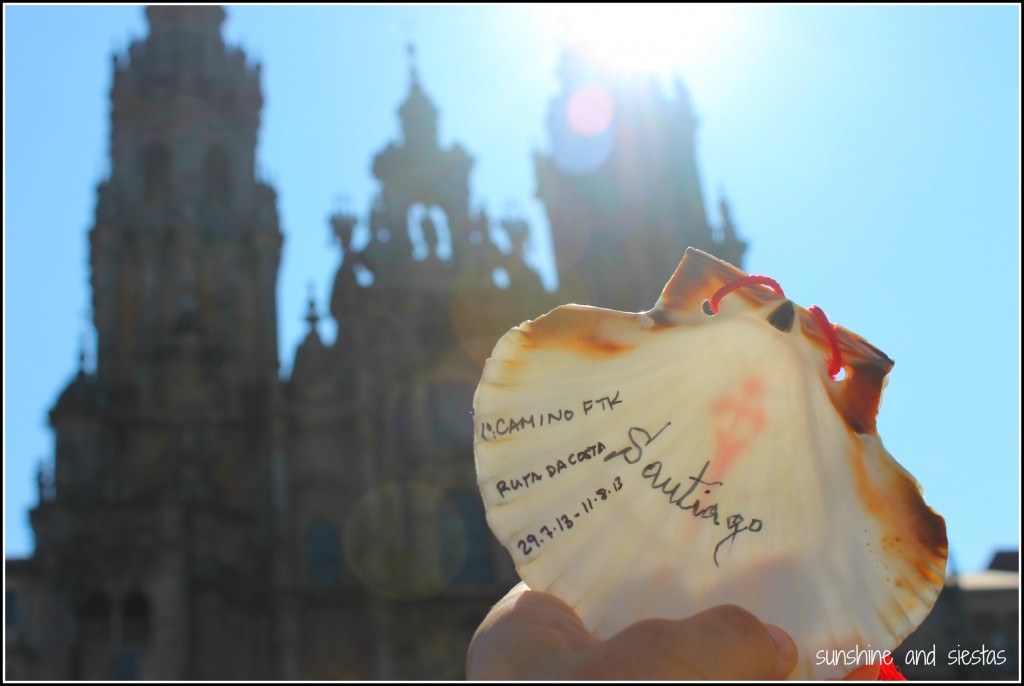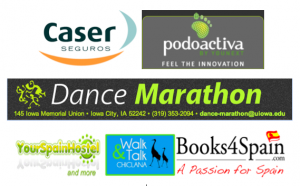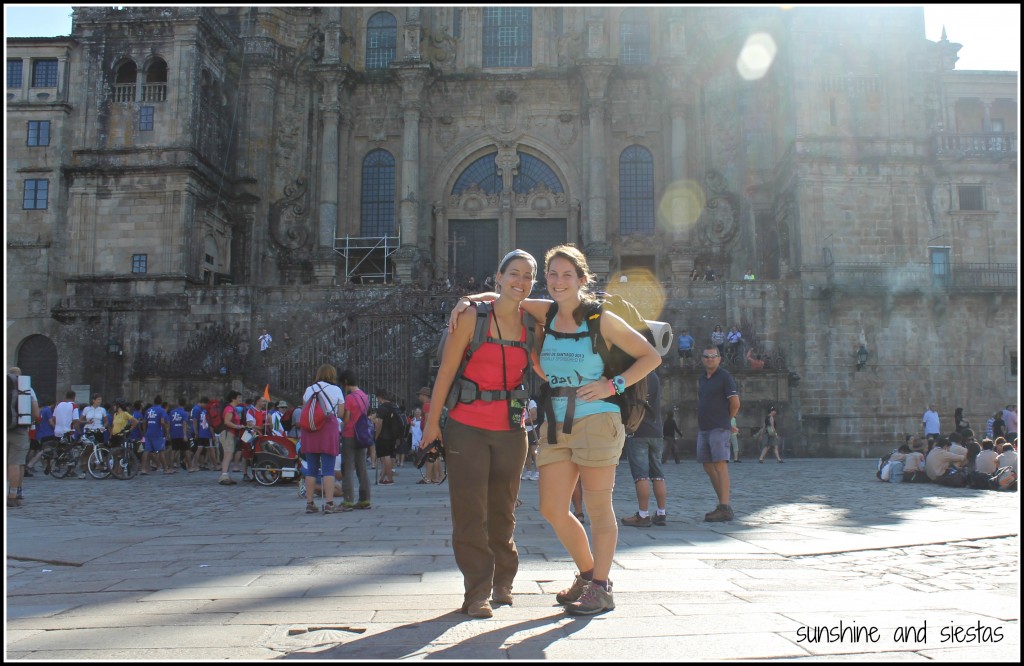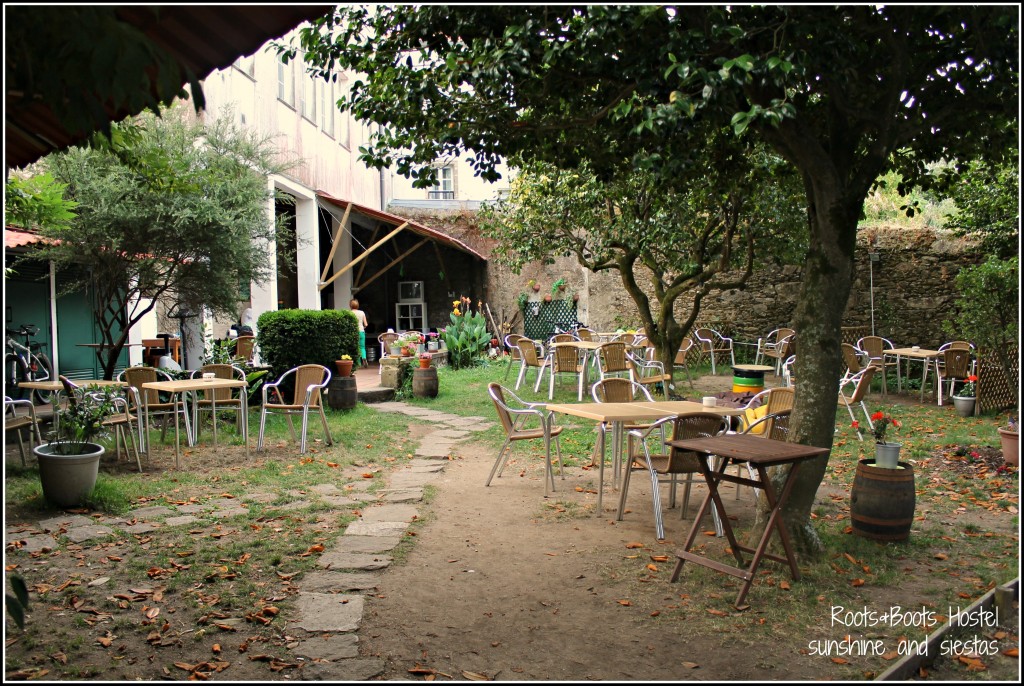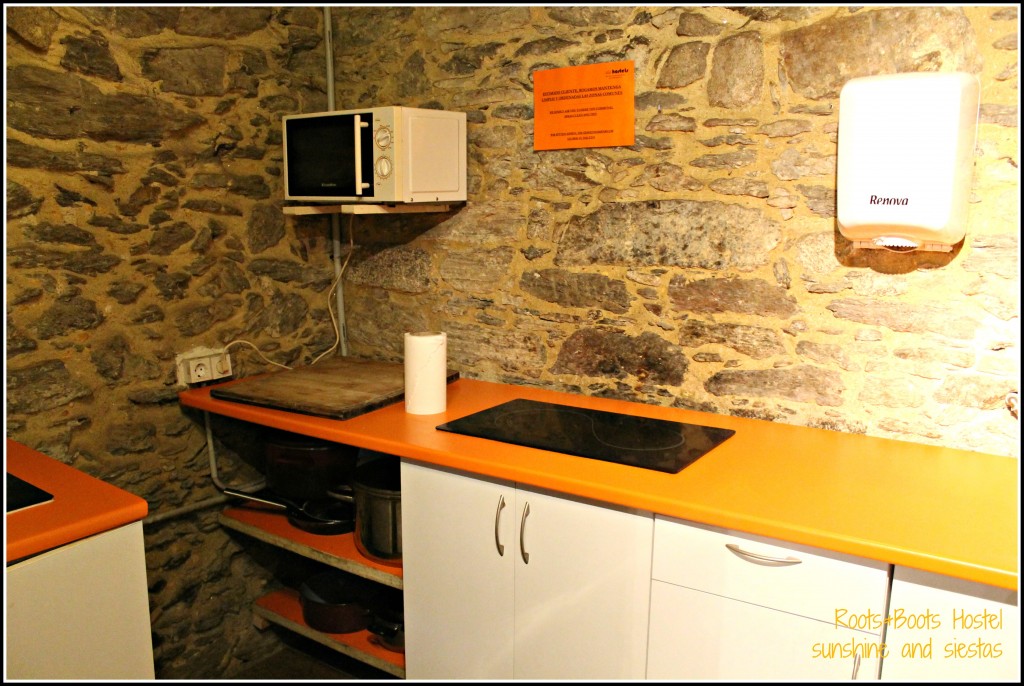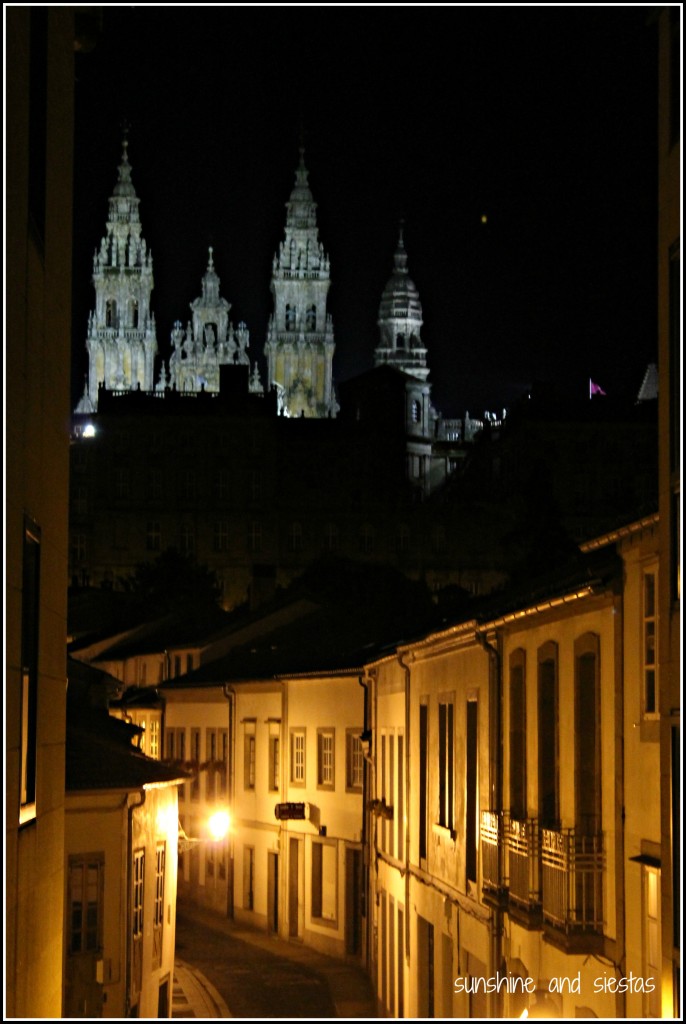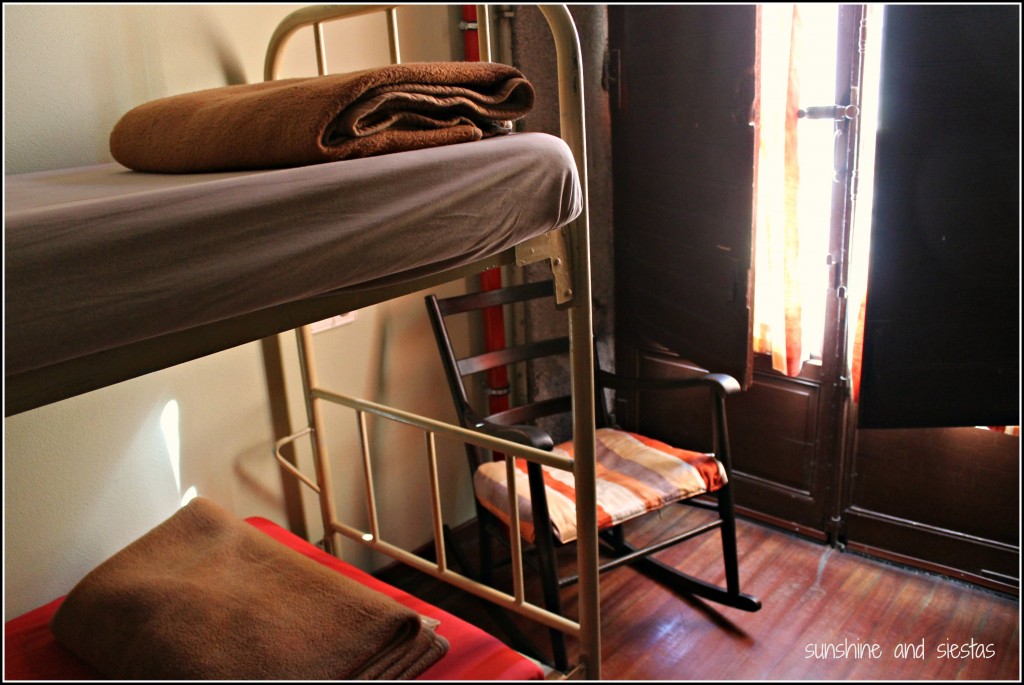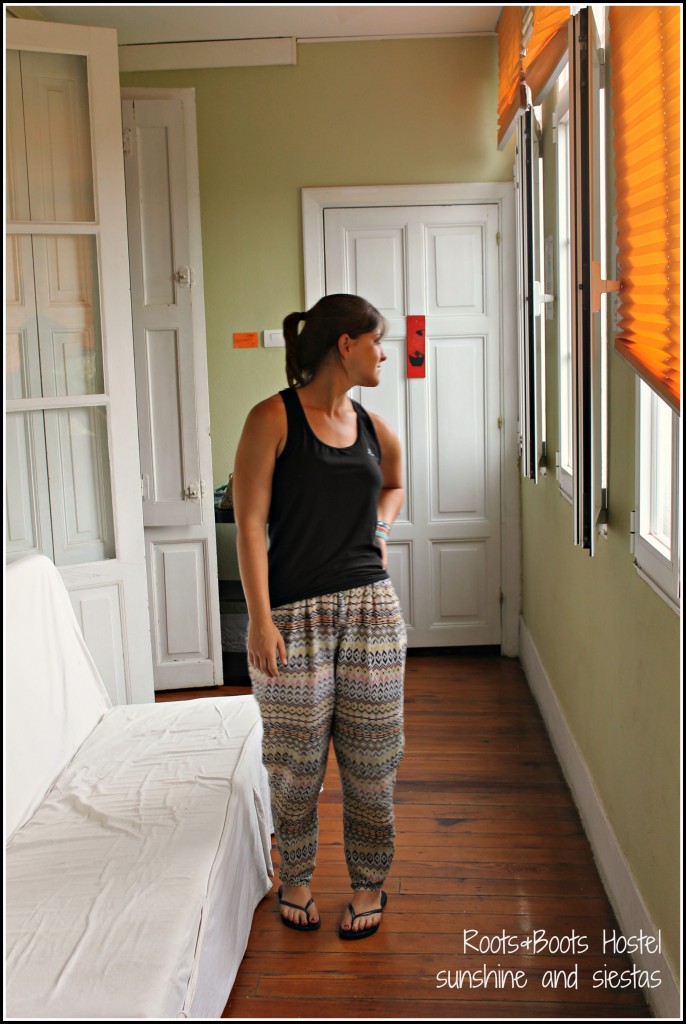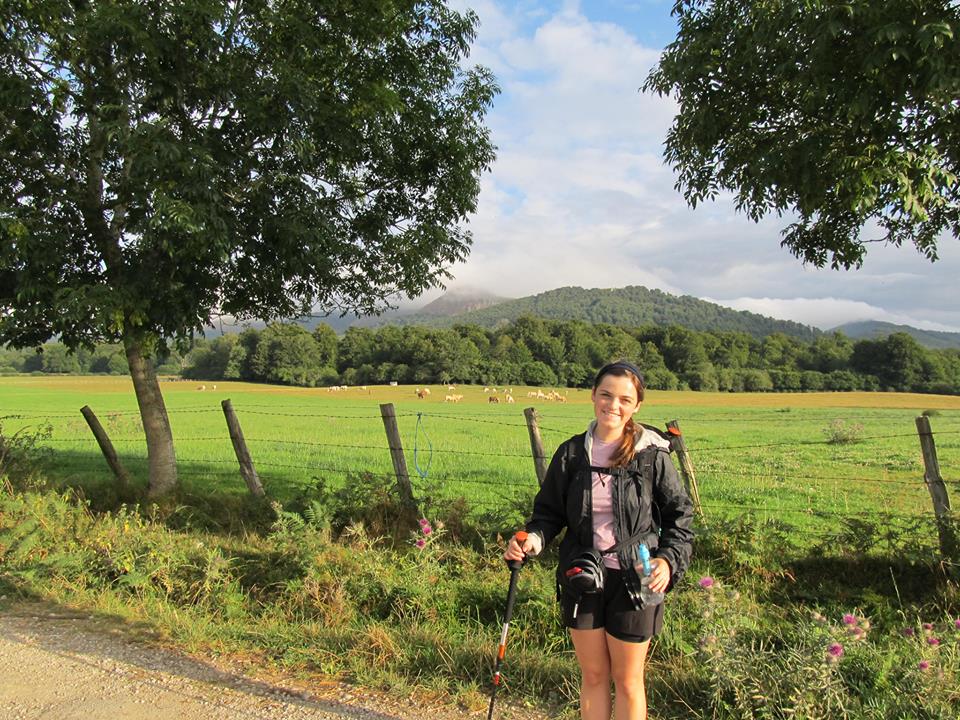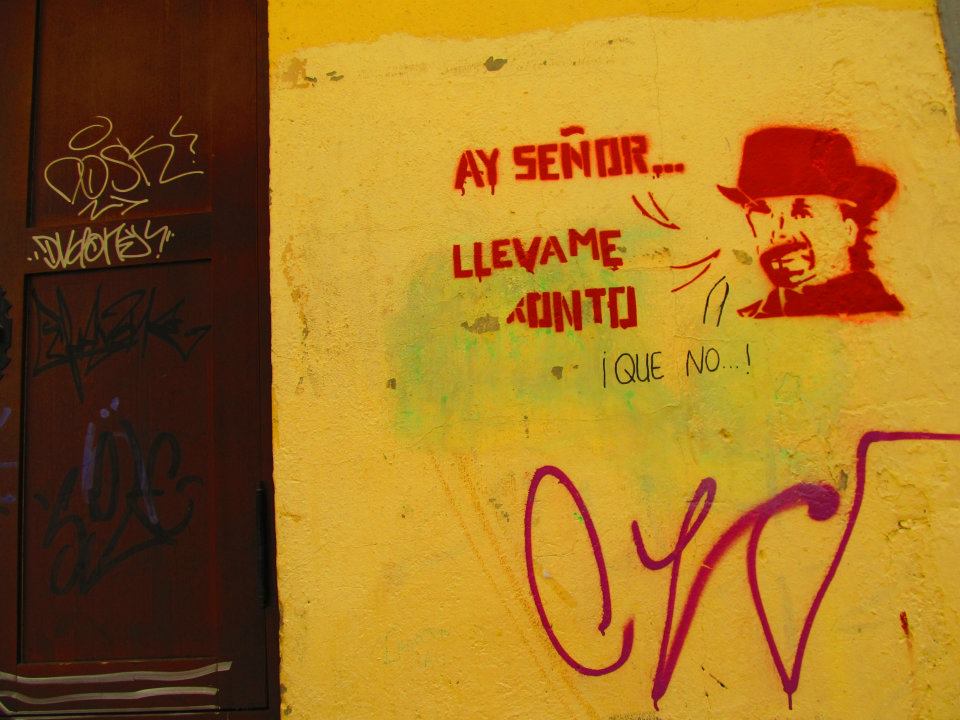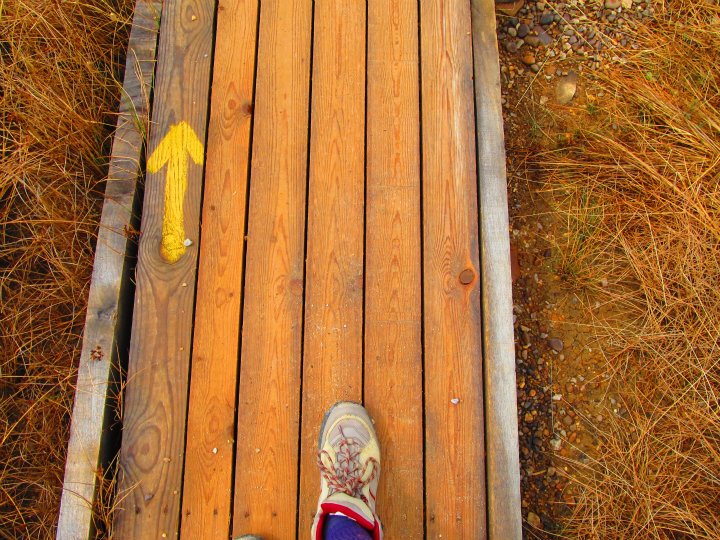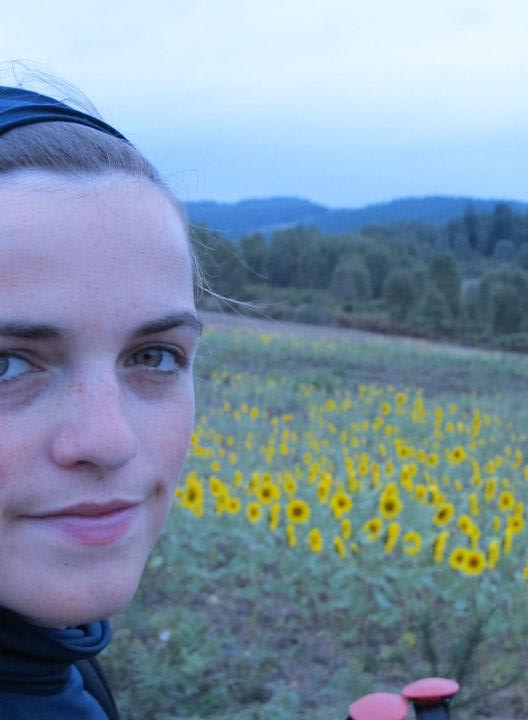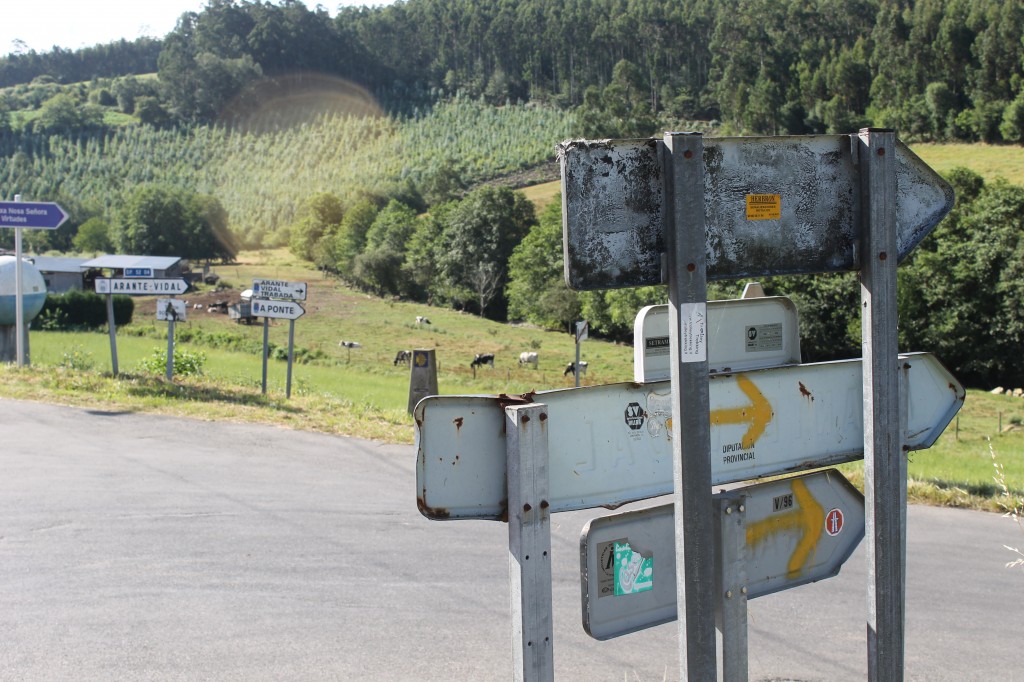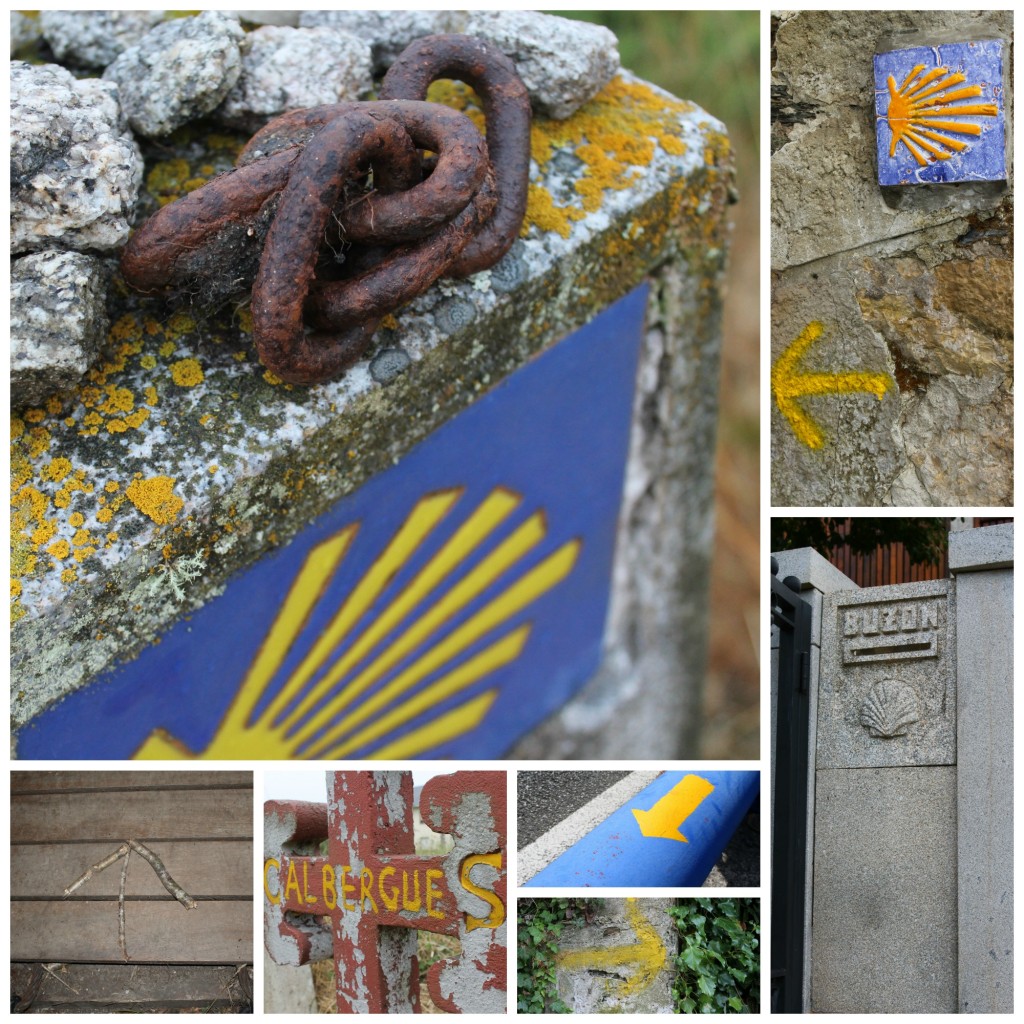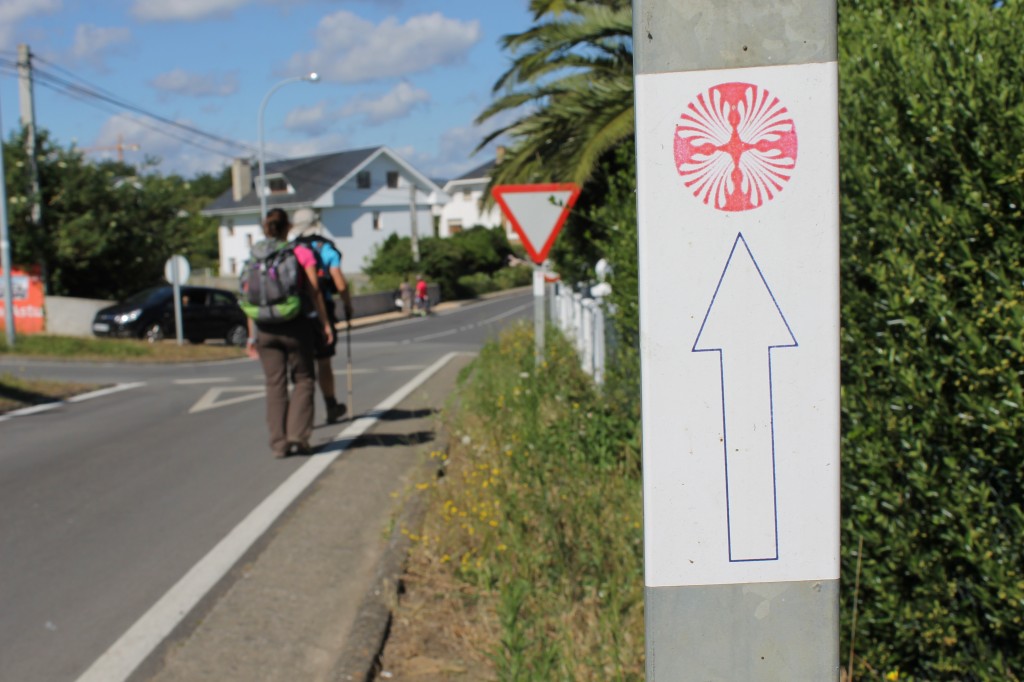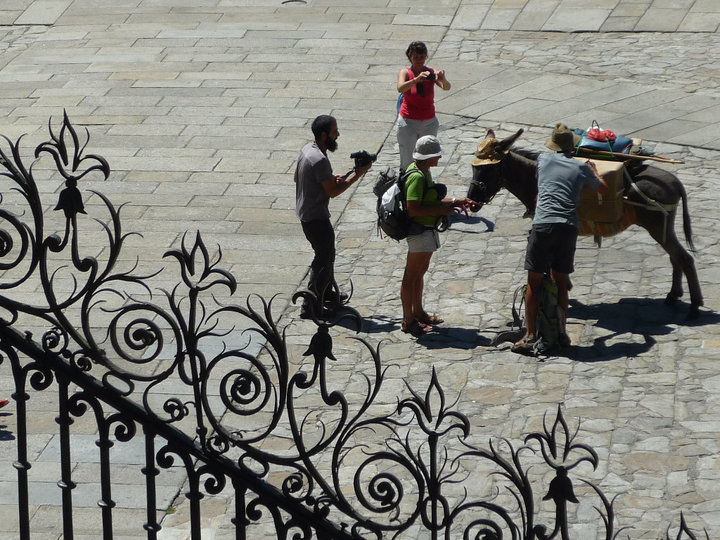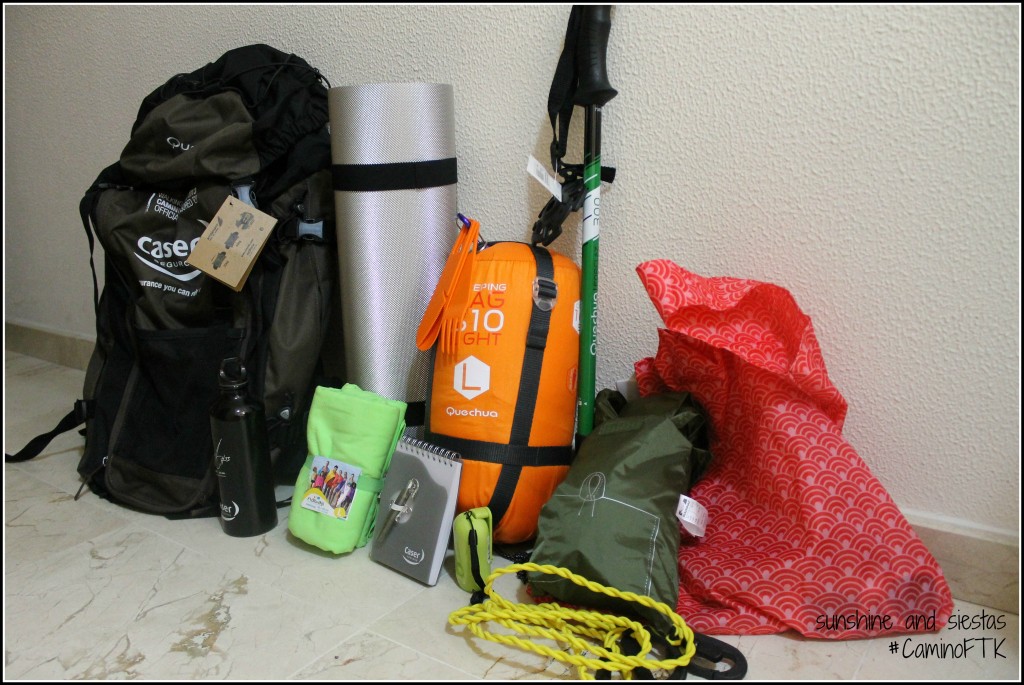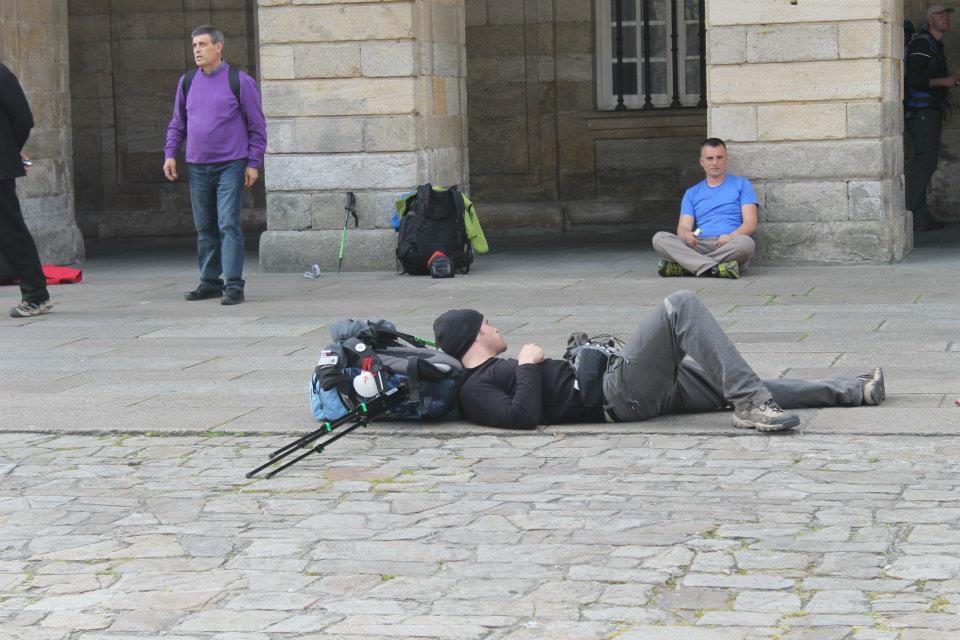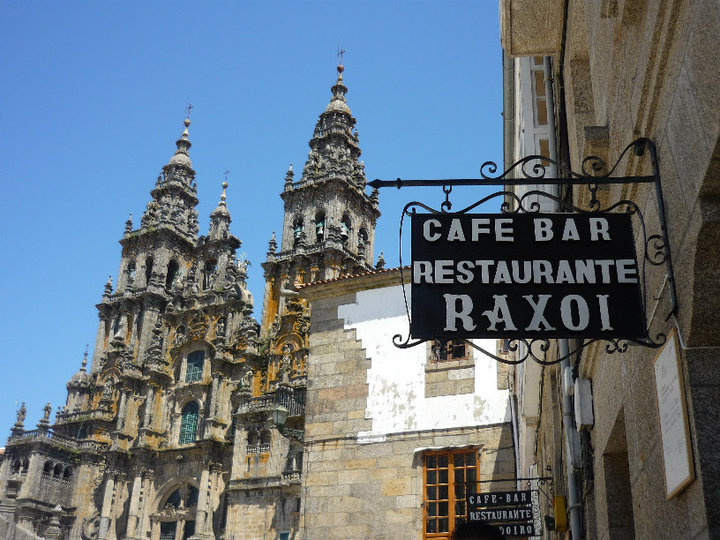‘El Camino no regala nada.’
I was trailing Iván, using his walking stick as a third leg as we trudged up a muddy incline somewhere between Santa Marina and Ballotas. I had joked around that my first and second breakfasts had not prepared me for the day’s long haul up and down ravines through western Asturias. But he was right – nothing on the trail came for free (except for the blisters – those were definitely free).
When Hayley and I decided to walk the Camino de Santiago two years ago, my mental preparation had begun and, even though my body never got the prep, I looked forward to two weeks where I had nothing to do but wake up, pull on my hiking boots and walk.
The Camino was, in many ways, a fourteen-day break from myself, from the pressures of daily life, from makeup and straightening irons. I cleared my head. I focused on eating and on sleeping and little more. Books and films paint a rosy picture of how the Camino has healing powers, about how one reaches the top of Maslow’s pyramid (totally made that up, but it’s not that far off), about how people’s lives change simple by trekking. Maybe they do, but mine certainly hasn’t changed in any profound way.
Don’t get me wrong – the Camino is still in the front of my recollection and I loved the experience I had (even the blisters – chicks dig scars, right?). Walking 326 kilometers along the coastline of Northern Spain may not have given my life a huge kick in the pants, but I wasn’t looking for it to, either. I didn’t go with a big question to wait and see if the road or God or another pilgrim answered it for me, nor did I set off hoping to find myself.
What I did take from the experience, though, was a better understanding about myself and my capabilities, a new dedication to seeking more from within myself, and the discovery that I have been me for far longer than I knew.
The Camino, as it turns out, it a great teacher.
What the Camino taught me about inspiration
“I don’t know,” said Antonio as he slid his insoles back into his boots. “For some reason, 3.000km just seemed like a good goal.” As we sat in the twilight of the municipal albergue in Vilalba, my jaw dropped. Hayley and I had done 200km or so, nothing compared to the number of footsteps Antonio had taken from Lourdes, France on his second Camino.
I was constantly inspired by the people with whom I shared the trail. Each person has their own story, their own reasons for walking to Santiago. The cook at the parador in Vilalba had walked to Santiago in 19 hours and was planning on walking the medieval city walls in Lugo 79 times for the victim of the Santiago train crash. Or the mother and her teenage daughter from Germany who were trying to learn how to get along. Or Pilgrim Peter, who was looking to find himself again after several jobs and not a clue what to do when he got back home (he never made it to Santiago due to a blood clot in his leg, and my heart broke for him).
I was inspired to come by a Spanish teacher, and just needed the impulse to actually go and do it. I needed to feel inspired. Once we set out, I was fascinated by the untouched landscapes, by the people we met, by the simplicity of pilgrim life. So inspired, in fact, that I can’t wait to do a second Camino.
What the Camino taught me about positivity
“I could complain, but it’s really no use.”
My friend Hayley says she’s a born complainer, but we realized its futility once we were walking on the second day near Soto de Luiña. This would be the day I’d get two blisters on my left foot and we’d arrive to Santa Marina with cramped muscles, but it was only the beginning.
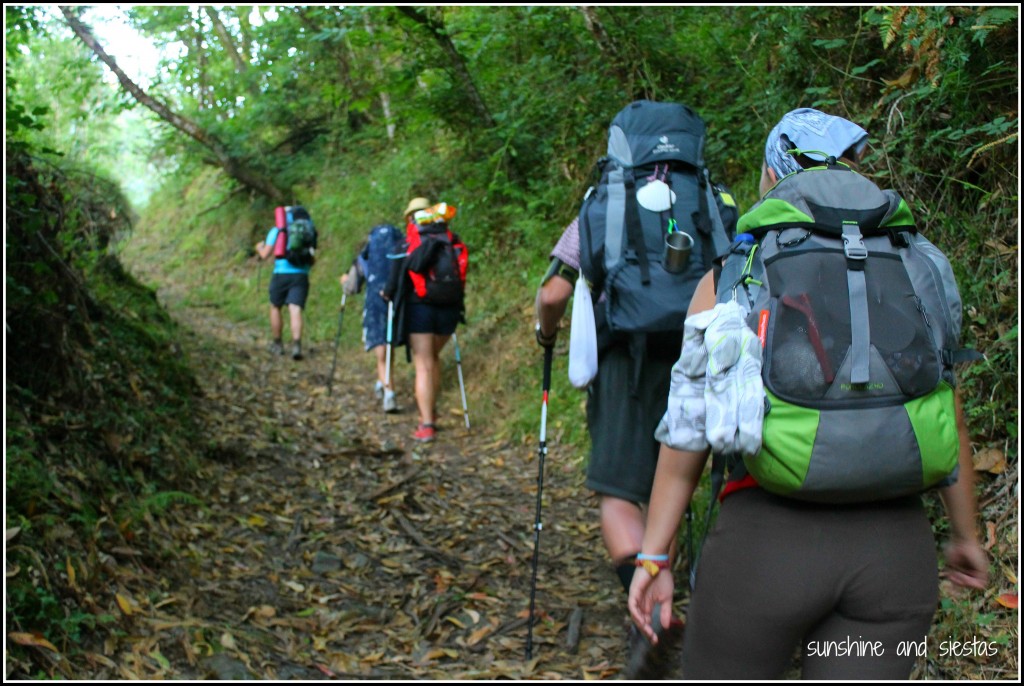
Injuries, getting lost and arriving to find that there was no more room at the inn temporarily dampened our spirits. The thing is, there were always other pilgrims who had more ailments, or personal demons, or didn’t get along with their companions. Guido got shin splints from pulling a cart along the looooong stretch of the N-634, the Coastal highway that hugs the Bay of Biscay and the Cantabrian Sea. Iván’s back was so sore, he couldn’t carry his bag, let alone walk the 26 kilometers from Ribadeo to Lourenzá uphill. Hayley had sun rash on her right arm.
Everyone suffers on the Camino.
But everyone also pushes on within their abilities. My biggest ailments were my bad knees and shins after years of gymnastics wreaked havoc on an otherwise healthy body. I could have complained that there were snorers in the albergues, that some pilgrim meals were not worth the 10€ they charged, or that townspeople seemed to think everything was only a little further one (three kilometers after 25 of them is NOT ‘only a little further along’). But it didn’t make sense to sweat the trivial parts of the experience.
What the Camino taught me about vanity
I didn’t even bring a pair of tweezers with me on the Camino (thank goodness there was a pair of them in my Swiss army knife – saved!). Makeup, moisturizer and other beauty products, minus my sunscreen and a comb, never made the cut when packing my backpack. Every day we’d wake up, slather on some sun protection, put our hair in pony tails and arrive a few hours later, sweaty and dirty, to the next pilgrim inn.
I can’t speak for everyone, but I forgot all about how I looked, if I had any zits or I had forgotten to suck my gut in. I wouldn’t consider myself high maintenance by any stretch of imagination, but I’ve noticed that I’ve become even less so in the six weeks since the Camino. I did treat myself to a pedicure because my feet actually hurt with the blisters, and I think the girl who had to buff off the old, dead cells was disgusted by the state of my tootsies.
I came to love my fresh faced look, and found my skin even seemed to improve. I felt more, well, me.
What the Camino taught me about my body
Speaking of vanity, I think I came to know more about my body while walking. When you’re in the middle of a forest or skirting around some hidden beach, there’s nothing between the ground and the sky but you and your body. By not worrying about makeup or clothes, I could concentrate on getting to know my body and its grievances. I listened when it needed water or a snack, and I allowed it to have a nap for as long as it needed. As a matter of fact, my body felt more rested at the end of the Camino!
Every morning, my body took priority over anything else – I would wrap my blisters, spread vaseline on my feet, gingerly put on my socks and hiking boots. I’d then spend 10 minutes stretching every single muscle, just as I did when I was a gymnast. I could soon feel every rock under my feet, I knew just where my back would be sore according to how I’d re-packed my bag that morning. While on the trail, I could calculate just how much fuel it would need during the day, and I rewarded its hard work with half a litre of vino nearly every afternoon at lunch (que Dios bendiga pilgrim meals!!).
When I didn’t cooperate, my body made sure I knew it – I had knee problems thanks to an old injury and tendonitis that had me ready to flag down us a bus when we were in Mondoñedo. Knowing that the rest of the day would be an uphill climb to Gondán, I freaked myself out, thinking it would be impossible to push on. But Hayley and I had promised that we’d be purist pilgrims and walk every last kilometer into Santiago. That night, we had to decide between sleeping on the floor of the sports center, or shelling out 19€ per person for a hotel room. Duh.
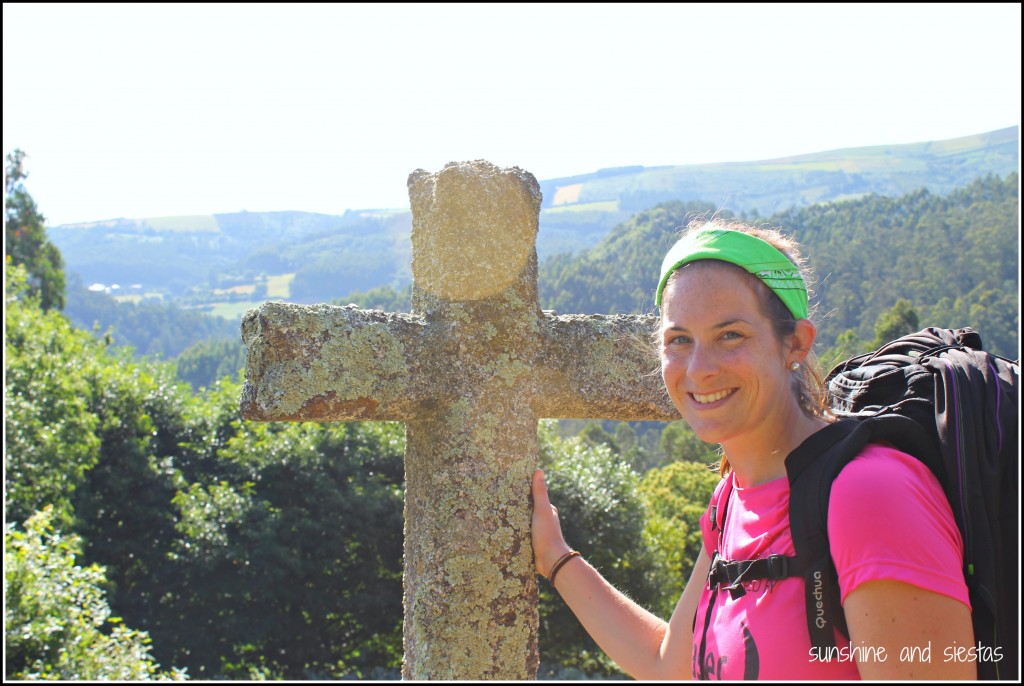
I also realized just how strong I got during the two week trip. After four days, we could log five kilometers in an hour and we could walk longer and farther after a week. My calves and glutes were working on overdrive. When we got to Santiago, I had half a heart to cancel my plane ticket and arrive to Fisterra. Even after returning to Seville, I began walking more often to the center (about four kilometers) or even Triana.
What the Camino taught me about grieving
I wasn’t only carrying a 15 pound bag on my back during the Camino – I was carrying my friend Kelsey in my heart. Kelsey fought cancer for seven years before she passed away in late 2011 at 21. The Oficina de Acogida de Peregrinos allows pilgrims to walking in memory of someone who has died or is physically unable to make the trip, something called ‘Vicario Por.’
Whenever by body hurt, I thought of Kelsey. As I curled up in bed one drizzly night in Miraz, I buried my head under the thick wool blanket and cried soft tears until I fell asleep. And when we arrived to Monte do Gozo, the final climb before entering the Santiago city limits, I cried for her and for her memory, big sloppy (and most likely, very, very ugly) tears while Hayley told me to cool it before she lost it, too.
I expected to grieve for Kelsey on the trip, and it felt right to remember her in this way. In some strange way, everyone on the Camino is grieving or remembering or getting over something or someone, evident by the piles of rocks left atop way markers and the need to go to Fisterra and burn one’s clothing. I left small orange and purple ribbons – the color of sarcoma and leukemia awareness, and also her favorite colors – in important places during the last few days, as well as a photo of Kelsey and a small scallop shell in St. James’s tomb when we went to pay our respects.
I left behind a part of me that will always remember, but I did the grieving I needed to in order to move on. Kelsey said she always wanted to go to Spain. She didn’t get there physically, but she’s been all over the North by now.
What the Camino taught me about myself
I didn’t expect a grand epiphany when we ascended Monto do Gozo and finally saw the end in site – in fact, I was quite sad to know that the journey was all but over, and a day later I’d be sleeping in my own bed in Seville. There was no moment of clarity or understanding or forgiveness or whatever it is that pilgrims are supposed to feel when they complete the Camino.
In fact, I was the victim of a surprise attack from a pilgrim we’d run into two or three times who hugged me before I could hug the one who’d stuck with me through the whole thing. Maldito Tomás.
I knew I would enjoy the Camino, despite the warning of ampollas, of cancerous peregrinos, of the threat of getting bedbugs for the third time. I just had no idea how much I would love the experience of sharing the road with strangers and of hearing the ground move under my feet. In fact, my feet became the center of my universe for 14 days.
I learned a lot from doing the Camino de Santiago, but mostly about me and my capabilities. I’m strong physically and mentally. I’m headstrong and can push myself.
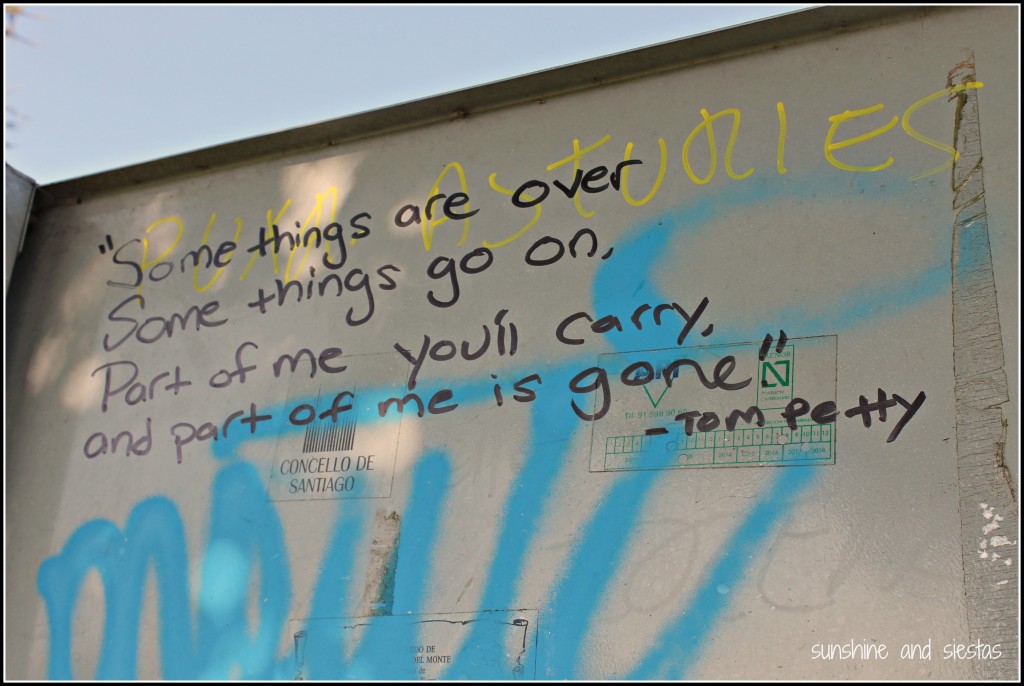
As my friend Alvaro from Bilbao put it, “Every step you took towards Santiago was a step towards your own destiny, to a story that you have for yourself that no one else will ever have. It’s all yours.”
If you’re interested in learning more about the Camino de Santiago, check out my articles on what to pack, how to read the waymarkers across Asturias and Galicia and about the beaches and quaint towns we saw along the way.

